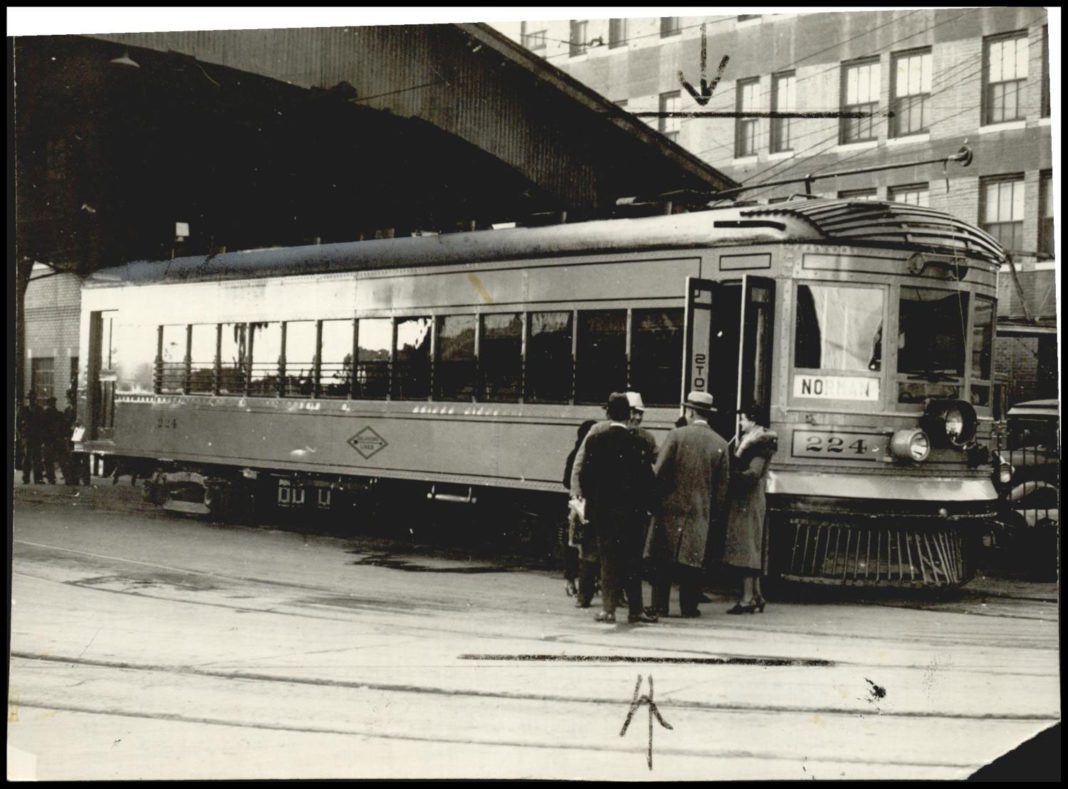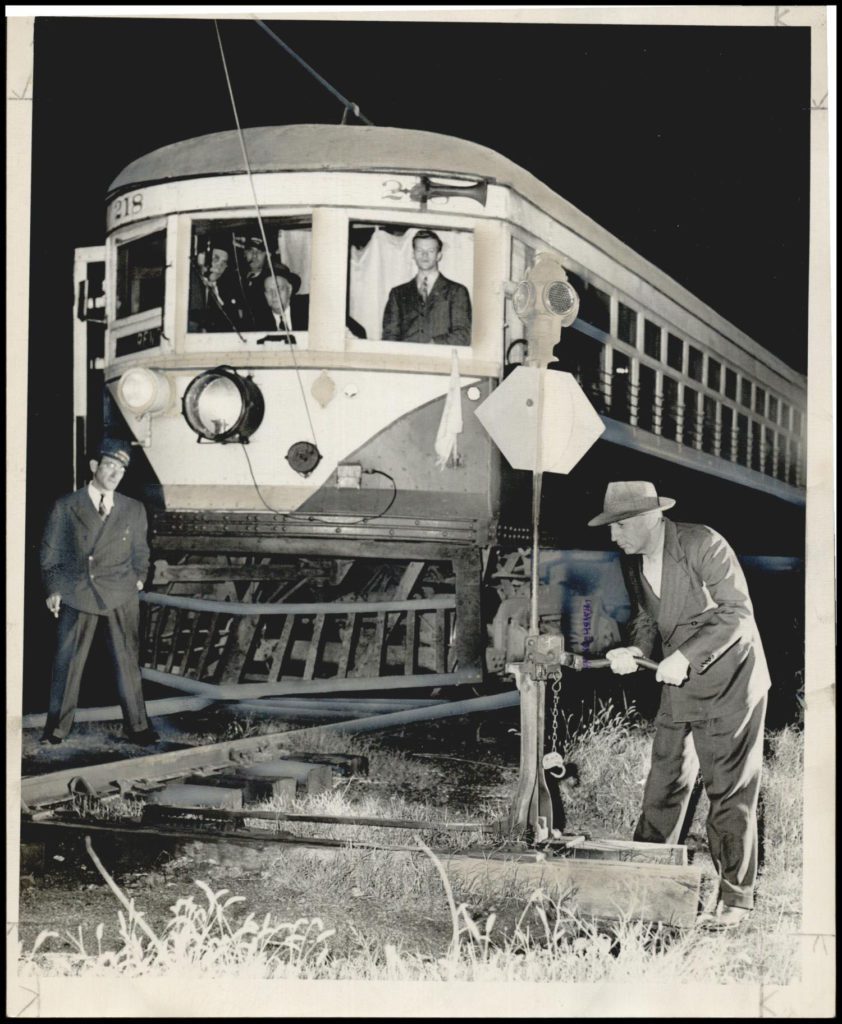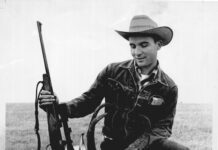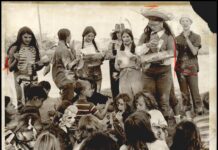As trolley cars that ran on rails, early 20th century interurban cars often carried about 60 people. These cars were cleaner than railroad compartments because they usually ran on electric power from overhead lines. They were also created for passenger comfort.
The words “interurban” and “streetcar” are sometimes used interchangeably. However, streetcars moved people short distances within a city. On the other hand, interurban cars were created for high-speed and long distance travel between urban areas.
Around 1900, interurbans became popular in the United States because they were important for urban development. Owned by various companies, they ran from, to, within, and through Oklahoma locations including Oklahoma City, Tulsa, Norman, Sapulpa, Lawton, Okmulgee, Bartlesville, Ardmore, Enid, Miami and Muskogee, among others. Some were fully operational by Statehood Day in 1907. One interurban company transported soldiers from Fort Sill to Lawton and Medicine Park.
Although it began as a gasoline-powered railcar, by 1908 the El Reno Interurban Railway Company was operating as the “Electric Interurban.” Cars left El Reno’s Southern Hotel every hour from 6 a.m. to 11 p.m. with stops in Banner, Yukon, Putnam City and Oklahoma City. The cars left Oklahoma City every hour from 5:30 a.m. to 9:30 p.m. But in August 1911, the Oklahoma Railway Company’s vast trolley empire acquired the El Reno Interurban. The interurban fare from Oklahoma City to Yukon was 50 cents one way, or 90 cents round trip.
Besides people, interurbans often carried goods. Meat, vegetables, milk, newspapers and other items were unloaded in Yukon each day onto the 40 x 50-foot dock on the northwest end of the Yukon Interurban Depot. Delivery men waited at the dock to unload the goods, and then haul them to Yukon and Piedmont merchants.
Fred Maier was Yukon’s Interurban Depot agent from 1928 until 1946. When the trolley line closed down, Maier bought the property and the depot structure. The Maier family still owns the historic Yukon Interurban Depot structure and the property on which it stands.
After World War II, many Oklahomans had money to purchase their own vehicles. Also, roads improved, and bus lines provided more options. The Oklahoma Railway Interurban, from Oklahoma City to El Reno, ceased operations in 1946. Although most Oklahoma interurbans stopped operating in the 1940s, some did not cease operations until 1960.
Segregation on Transportation
Oklahoma gained statehood on November 16, 1907. On Dec. 18, 1907, the legislature’s first bill became law.
Senate Bill One, aka the “Coach Bill” or the state’s first Jim Crow law, stated that “every railway company, urban or suburban car company, street car or interurban car or railway company … shall provide separate coaches or compartments as hereinafter provided for the accommodation of the white and negro races, which separate coaches or cars shall be equal in all points of comfort and convenience.”
The bill also required separate station waiting rooms for black and white people. Black passengers boarded at the rear of the car, and accommodations were not, in reality, equal.
Jim Crow laws involved societal segregation or discrimination against black people. In 1914, the U.S. Supreme Court declared the law constitutional, but reversed the decision in 1952. In 1962, the Oklahoma Legislature repealed public transportation segregation statutes.



























